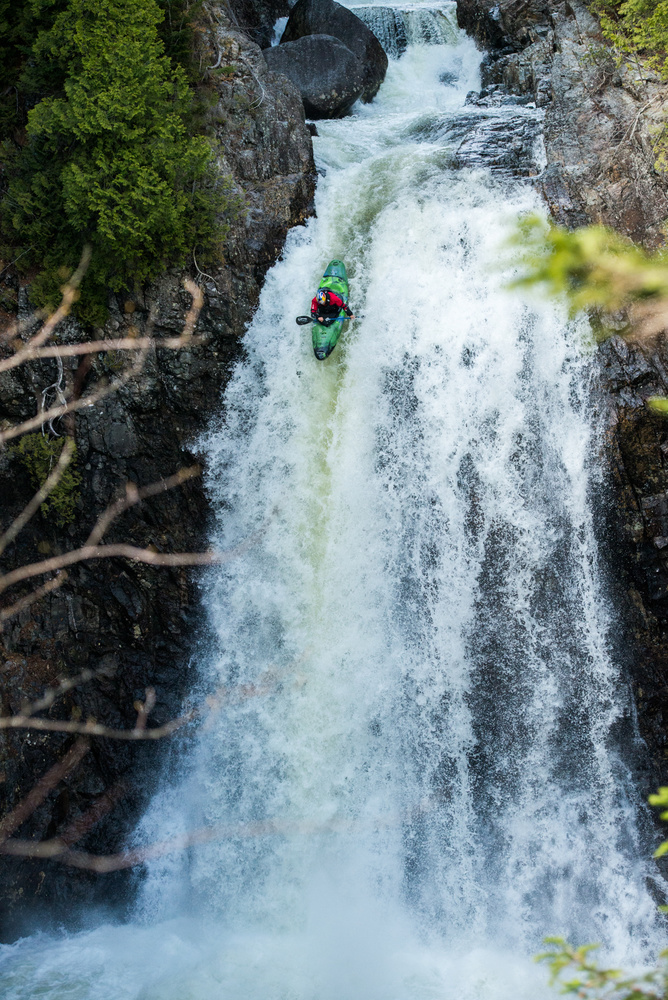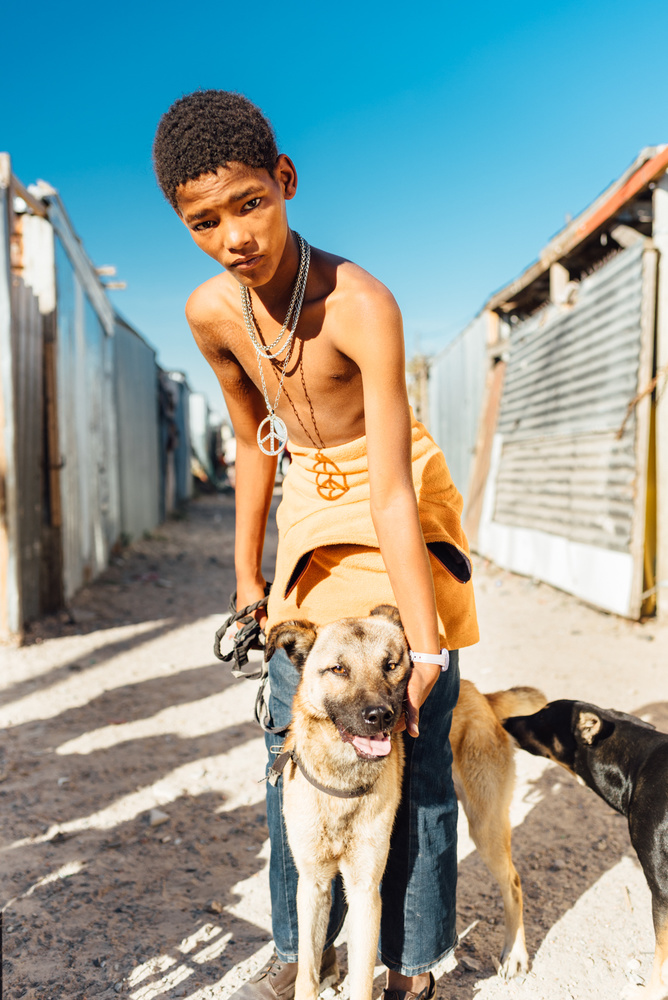In an industry that seems to grow exponentially every day, how can existing and new photographers find an outlet for their work - one that is going to pay the bills and fuel their passions? Lifestyle, sports, and adventure photographer Scott Martin may have the answers you've been looking for.
Martin is an internationally-published photographer who's also been fortunate to work with some of kayaking's top athletes. Growing up in Southbroom and Cape Town, South Africa at the tail-end of Apartheid, Martin's family took frequent trips along the coast and to the Drakensberg mountains. It was during one of these family vacations where Martin partook in the river rafting trip that changed his life. "I was 13 and already loved swimming and jumping off rocks," said Martin. "But then I was amazed that you could paddle rapids, and I was absolutely in love with all of the river guides."
Two years later, Martin found himself guiding on the Orange River during school holidays and vacations. The trips were four-day excursions into wilderness environments which bordered the west coast of South Africa and Namibia. "I wanted to capture this beautiful area, so one season I asked my mom to take her camera with me," said Martin. Heading out to capture a place he loved so much with a camera full of film, Martin's photography interest sparked. "I was just excited to show my friends and family the place I had been going," said Martin. From there, the rest is history.
Martin visited the United States for the first time while on a gap year after graduating high school, where he worked as a camp counselor in New Hampshire. Just after arriving, Martin immediately went to B&H in New York City and bought himself a Nikon N80 to properly document his time in the country. For three years the photographer spent summers in the U.S. and the rest of the year in South Africa working as a river guide. He constantly brought his camera along and eventually, he and his coworker began making films with an entry-level Sony Handycam.

River guiding eventually led to kayaking, when one day Martin and his coworker followed their boss on a kayaking expedition down the White Nile. They made a short film about their trip and even won a small outdoor film festival award. "We won a film fest and kayaked the Nile ... we thought we were hot shit," said Martin. "After the trip and winning the award, I continued to photograph while kayaking as much as possible."
After meeting his future wife while working his summer camp job in the northeast, Martin eventually moved to the United States to begin a career in photography. "I examined my interests - kayaking and photography - and wanted to combine the two to make something bigger," said Martin. After reaching out for advice to many professional photographers in his genre of photography, a surf photographer from South Africa was the first to respond. "All I wanted to do was have my photographs published in magazines," said Martin. "Alan gave me a ton of tips and helpful information to help me go about this."
Some of Martin's biggest takeaways from this conversation with the professional surfing photographer was that forming a career in the industry is all about the relationships you build. This can require a lot of patience, professionalism, and kindness. "You never know what an editor is going through if you send an email or letter and they don't get back to you," said Martin. "You have to respect their deadlines, be polite, and follow-up."
 Another big takeaway that Martin took to heart after his conversation with the surf photographer is the importance of surrounding yourself with motivated creatives and making sure those people are happy to have you around and are willing to teach you lessons of the art and business. "Through this, I realized the importance of finding people who match my outlook and learned as much as possible just by being around them," said Martin.
Another big takeaway that Martin took to heart after his conversation with the surf photographer is the importance of surrounding yourself with motivated creatives and making sure those people are happy to have you around and are willing to teach you lessons of the art and business. "Through this, I realized the importance of finding people who match my outlook and learned as much as possible just by being around them," said Martin.
"The surf photographer said to me that as photographers we all start somewhere and can only get better the more we pursue it," said Martin. After shooting as much as possible, this wisdom began to be more and more true. Eventually, Martin's images appeared on the front cover of kayaking magazines that showed up on newsstands around the country and the globe. At the same time, Martin began fine-tuning what and where he was shooting.
He started spending a lot of time in the Adirondack Park in upstate New York, and even self-funded a trip to photograph and write about different rivers within the Park. "I did most of my early 'assignments' pro-bono," said Martin. "But the International Canoe Federation has an international magazine, and they picked up the entire story for one of their issues." Martin's time spent in the Adirondacks eventually paid off: a mutual friend connected him with a Red Bull athlete who was looking to send Hanging Spear Falls, a 75-foot waterfall deep in the Park's backcountry. "Working with Red Bull totally changed my life," said Martin. "Working with athletes at the top level who are doing what they love every day was inspiring, and I knew I couldn't really mess up the assignment."
 Now, Martin splits his time photographing weddings with his wife and working on assignments - personal and professional - in South Africa and the United States. "I still feel a deep connection to South Africa," said Martin. "Having citizenship in both countries, I feel as if I have a responsibility to share what's going on in both countries to a larger audience." But how does this responsibility take shape, and what does it look like?
Now, Martin splits his time photographing weddings with his wife and working on assignments - personal and professional - in South Africa and the United States. "I still feel a deep connection to South Africa," said Martin. "Having citizenship in both countries, I feel as if I have a responsibility to share what's going on in both countries to a larger audience." But how does this responsibility take shape, and what does it look like?
Shooting weddings is good practice for kayak photography ... They are both similar because you don't have a hell of a lot of control over what's going on in terms of lighting or where you can stand.
Recently, Martin was in South Africa when his sister suggested shooting photos for Tin Can Town, an organization which works closely with the Blikkiesdorp community. In 2010, the FIFA World Cup arrived in South Africa. As a result, the South African government relocated people from land "needed" for the World Cup to a community called Blikkiesdorp. By law, the South African government needs to supply a house for everyone. However, the community at Blikkiesdorp - eight years later - still does not have proper homes. "There are no trees, zero greenery, blue skies, and tin shacks," said Martin.
But one major component to the community which helps maintain some level of hope and happiness is their dogs. "The people of Blikkiesdorp love their dogs, probably even more than all the people you see happily walking their dogs in Central Park," said Martin. "But since the community is so poor, the animals are malnourished and don't have the best health." Tin Can Town aides the South African community by supplying them frequent animal check-ups and supplies. "A lot of these people have only what is available to them," said Martin. "They put chains around their dogs' neck, but don't realize and don't have the means to change them out as the dogs grow, so many have chains grown into their neck."

The purpose of his personal assignment was to photograph the Blikkiesdorp community and to show their connection with the animals. After photographing in a short span of just two hours with one lens and camera, Martin and his wife wanted to figure out how to better help Blikkiesdorp and the Tin Can Town organization. They take financial donations, but Martin wanted to do more than give money. "I posted on social media my images of Blikkiesdorp and information about looking for used dog collars," said Martin. "At the end of one week, we received over 250 dog collars... I was amazed at the power of social media and storytelling through photography."
Going forward, Martin realizes that spending so much time in the outdoors in many different environments - from South African desert communities to northeast forests and rivers - means that he can help give a voice to the environment and outdoor issues. The recent controversy regarding Bears Ears National Monument in Utah especially sparked his interest. A new project-in-progress involves photographing influential people in the environmental and outdoor world. The hardest part is thinking of and sticking to a project, but "once you begin and gain momentum, it's easier for people to take notice of your work and to keep the momentum going."
A huge part of Martin's success in the photography industry - besides his candid photojournalist approach to adventure sports and lifestyle images - can be linked to his motivation and ambitions of creating his own assignments. "You can't wait around hoping editors will approach you to produce work," said Martin. "You have to create your own projects, and create your own success."
To view more of Martin's images, visit his website, Facebook, Instagram, Tumblr, or VSCO.
All images are used with the permission of Scott Martin.






